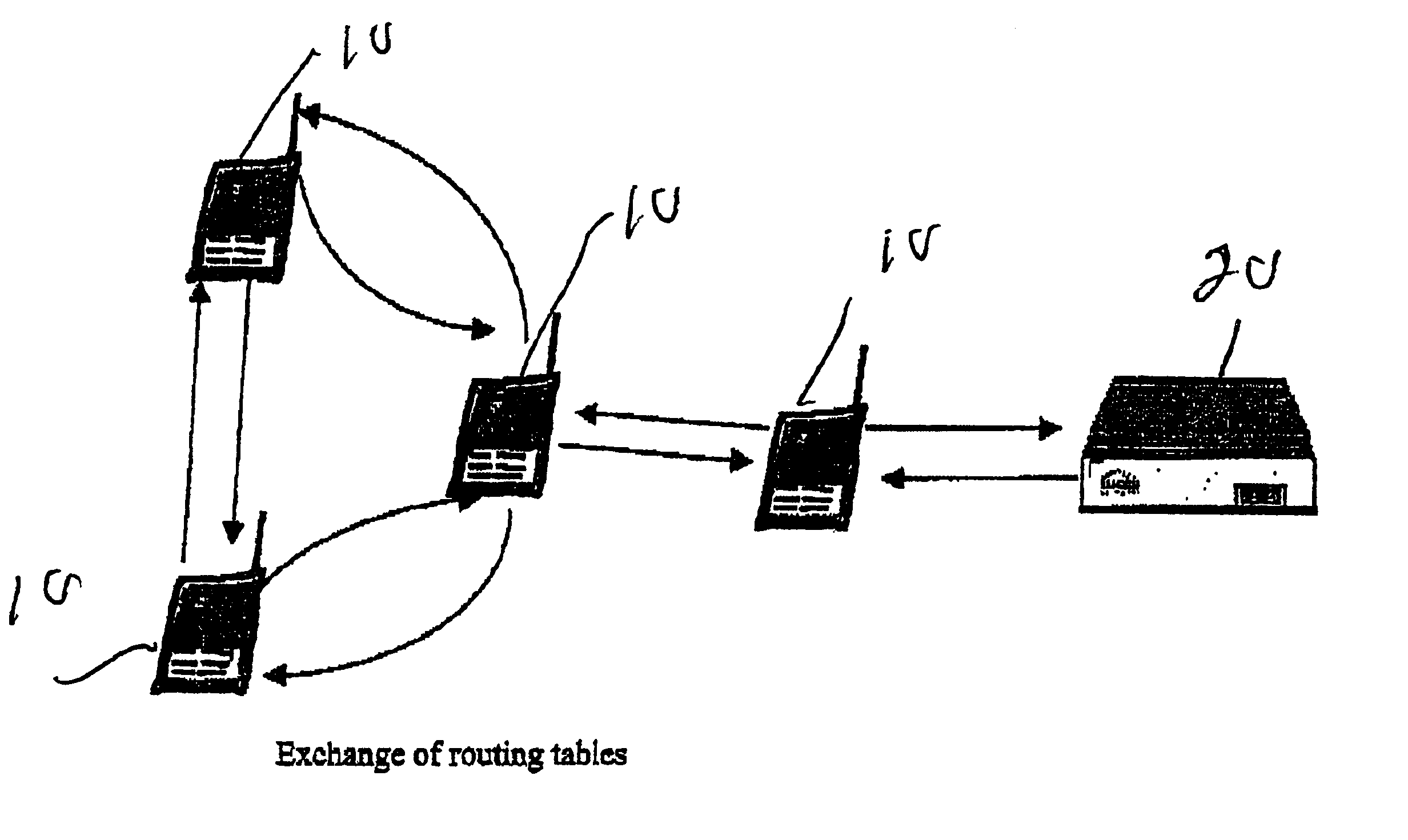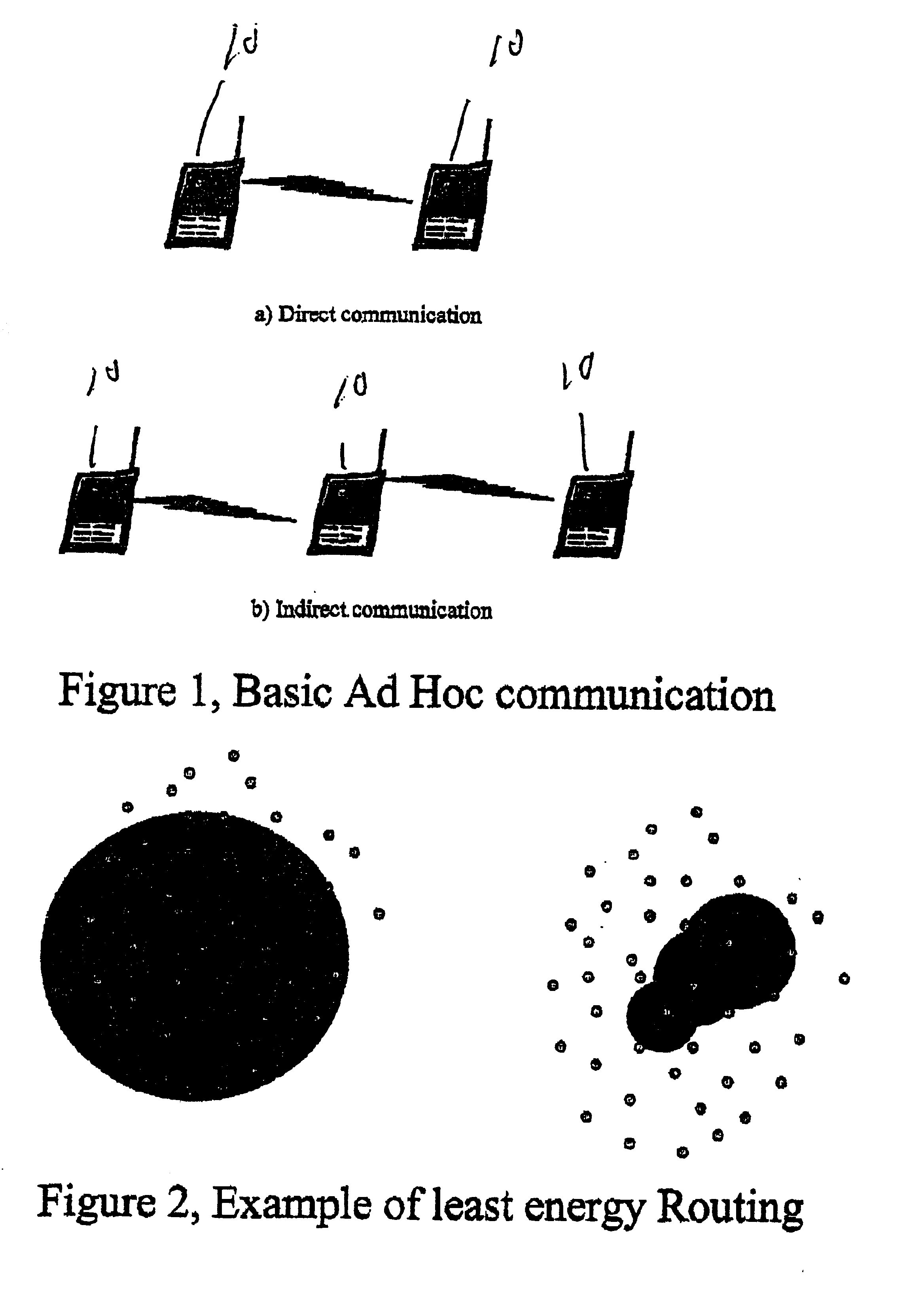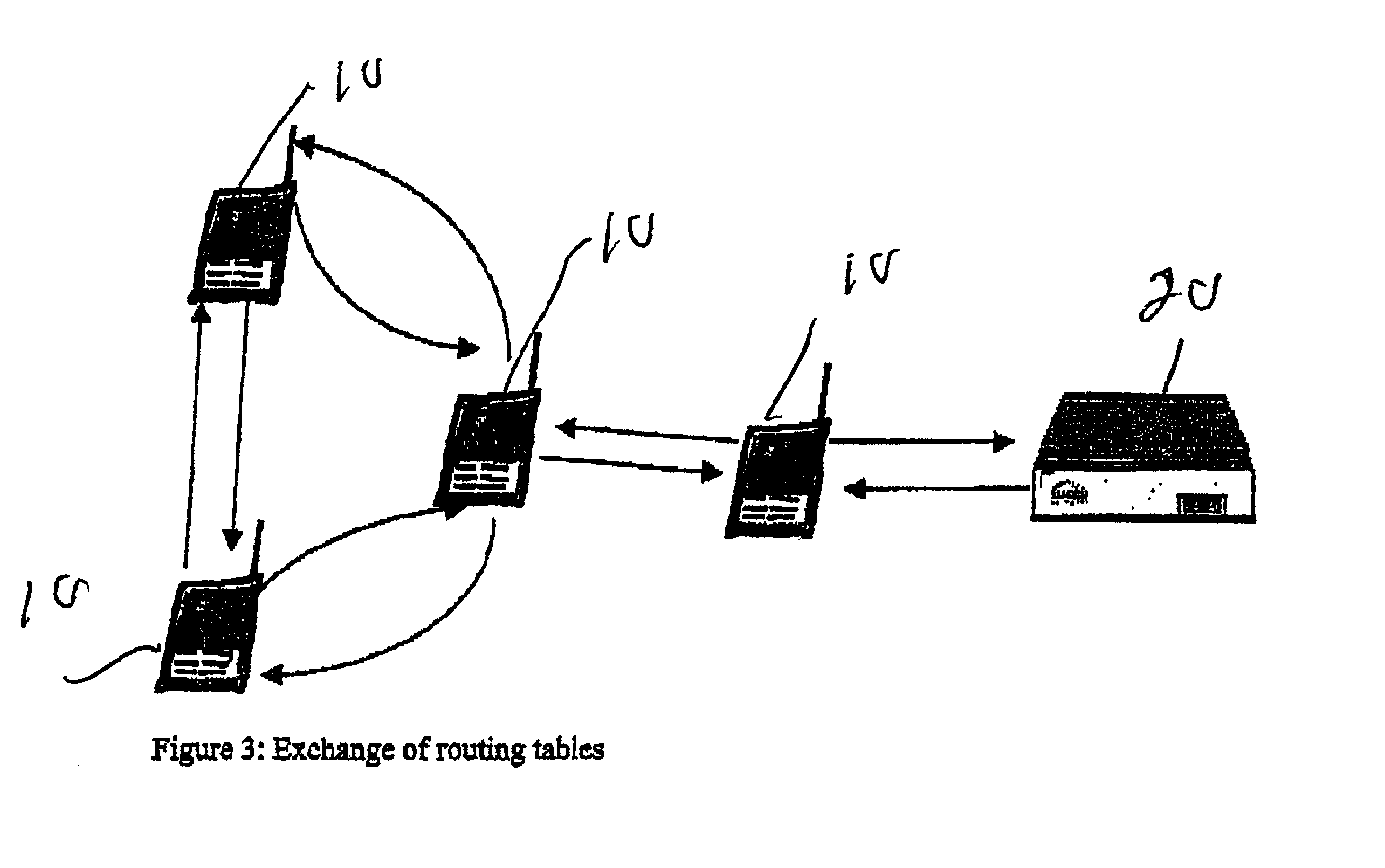Prioritized-routing for an ad-hoc, peer-to-peer, mobile radio access system
a mobile radio access system and priority routing technology, applied in the field of priority routing for mobile radio access systems, can solve the problems of not being able to consider the impact of the battery life of the terminal, not being able to deploy voice systems, and depleting the limited-life batteries more quickly, so as to reduce the interference between the terminal and the radiated rf energy, improve the battery life, and reduce the effect of interferen
- Summary
- Abstract
- Description
- Claims
- Application Information
AI Technical Summary
Benefits of technology
Problems solved by technology
Method used
Image
Examples
example 2
Power level=+30 dbm, Data Rate=500 kbps.
Cost=10+(+30)+10* log10 (8 / 0.5)=40+10*1.2=52
The range for this value is 0-52.[0089]Hops—The number of hops to the sender of the RA to the destination.[0090]Congestion—The average quantized level of congestion from the sender of the RA to the destination (range 0-7).[0091]Mobility—A bit designating whether or not the destination node is currently moving.[0092]Ra Heard—A bit desighating whether or not the sender of the RA has recently received an RA from the destination being reported.[0093]Battery—A value from 0-7 designating the following battery conditions:
[0094]
0.IAP1.Wireless Router2.Subscriber Device with non-battery power3.Subscriber Device with nearly full battery (>80%)4.Subscriber Device with battery level (>50%)5.Subscriber Device with battery level low (>20%)6.Subscriber Device (or Wireless Router) with minimal battery (>0%)7.Subscriber Device: Don't Use Ever. This prevention should becapable of being chosen by the network manager re...
PUM
 Login to View More
Login to View More Abstract
Description
Claims
Application Information
 Login to View More
Login to View More - R&D
- Intellectual Property
- Life Sciences
- Materials
- Tech Scout
- Unparalleled Data Quality
- Higher Quality Content
- 60% Fewer Hallucinations
Browse by: Latest US Patents, China's latest patents, Technical Efficacy Thesaurus, Application Domain, Technology Topic, Popular Technical Reports.
© 2025 PatSnap. All rights reserved.Legal|Privacy policy|Modern Slavery Act Transparency Statement|Sitemap|About US| Contact US: help@patsnap.com



